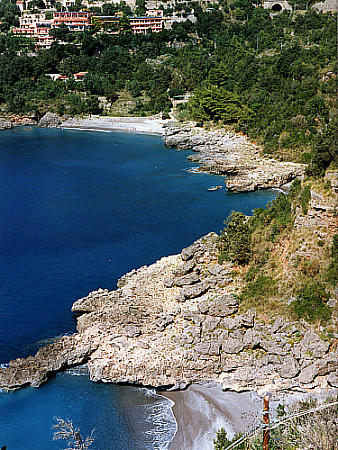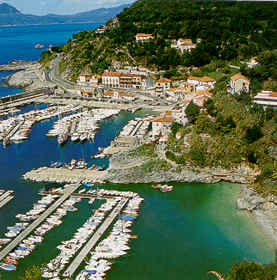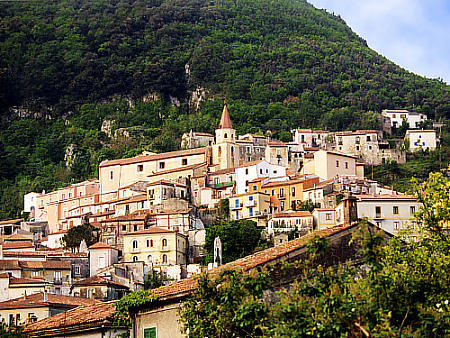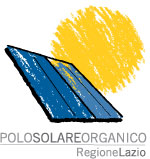Maratea
 Ancient city on the Gulf of Policastro, girdled around by mountains rising above the pleasant valley, echoing the voices of its outlying hamlets, Maratea is the only portion of Lucania on the Tyrrhenian Sea, where it stretches for about 30 km, astride the provinces of Cosenza and Salerno.
Ancient city on the Gulf of Policastro, girdled around by mountains rising above the pleasant valley, echoing the voices of its outlying hamlets, Maratea is the only portion of Lucania on the Tyrrhenian Sea, where it stretches for about 30 km, astride the provinces of Cosenza and Salerno.
Although the birth of the town cannot be dated with absolute precision, there are some unmistakable indications. For example, its name and several other place-names (Calicastro, Racia, Profiti, Filacara, Santavenere) would justify situating it in or around the Greek period, as recent archeological discoveries appear to confirm. Whereas the name and origins certainly go back to the Greek colonization, the most ancient document on the city, a bull of Alfano I, Bishop of Salerno, dates from the year 1079.
In subsequent centuries Maratea would have followed the political fortunes of southern Italy, always, however, managing to obtain from successive dynasties of the Kingdom of Naples numerous privileges for its freedom-loving people.
 The coast
The coast
From the western bank of the River Noce, which makes the Plain of Castrocucco so fertile, with its double harvest of fruit and vegetables, to the Mezzanotte (midnight) Canal, which traces along the awe-inspiring cliff (perhaps the origin of the name "Mezzanotte") the edge of the boundary with Campania, Maratea displays a coastline of unusual charm and beauty.
Among other features of the coast is the chain of eight square towers strategically erected on headlands and high ground, as look-out posts and defences against the raiding Saracens and corsairs.
Enlivened with rocks and shallows, creeks and caves (those of Marina are particularly interesting), big and small beaches, tailored, as it were, for human beings, sandy or pebbly, ferrous or calcareous, the coast is dotted with pines, olive trees, oaks, carobs and holm-oaks, often leaning over the sea as though they longed to plunge their leafy heads into it and slake their thirst with immortal waters to keep them ever cool and fresh.



 Clermont 4 Project
Clermont 4 Project